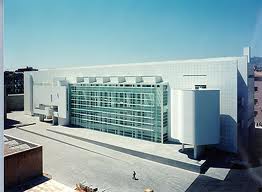Museums in Barcelona
As far as trends are concerned, nothing is more in than Barcelona. Avant-garde, hectic and quintessentially post-modern, few could argue against this being the coolest place in the Mediterranean Sea, in Spain, in Europe, in the world. Adorned with extraordinary architectural samples, primarily of Catalan art deco, and eminently conscious of itself, Barcelona is practically a living, sweating, walking museum. And yet, despite its beauty and splendour, Barcelona is as welcoming as it is malleable –a place that screams to be appropriated by its visitors and handled at will.

The cultural offer in Barcelona is, quite literally, endless: from the theatre to the cinema, concerts, performances and what not, the only way to approach this city is by having a clear idea in advance of what you want to do. That, or giving yourself away to fortune and choosing at random. Either way, attempting to cover the whole spectrum of the city's cultural agenda is as futile as it is unrealistic. So much is true of what concerns museums in Barcelona and their seasonal exhibitions.
Barcelona city guides claim there are over fifty museums in the city, so there certainly is something for even the most extravagant tastes. Particularly rich in its plastic art heritage, Barcelona proudly boasts individual museums for some of the most prominent characters to have enhanced the artistic life of the city, such as Joan Miró, who donated his ateliers in order to turn them into a museum, and Pablo Picasso, who spent much of his life between Paris and the Catalan capital.
Another giant of the artistic world of the XX century whose mark was clearly felt in Catalonia was Salvador Dalí. Originally from Figueres, roughly 90 miles away from Barcelona, Dalí's persona was as famous as his creations. Nevertheless, his reputation as a Surrealist painter is largely owed to the influence that the landscape that surrounded him both at his birthplace and later on in his house at Cadaqués, right on the shores of the Costa Brava, where the rock formations and the vegetation combine to create an essentially bizarre environment.
If one artist has single handedly shaped the outlook of Barcelona to date, however, that must be Antoni Gaudí, the extravagant architect whose work constitutes the most iconic image of the city. Indeed, sometimes it feels like Barcelona is one big Gaudí museum, with the Sagrada Familia church, the various private homes he designed, from the Casa Batlló to the Casa Milà, and, of course, the Güell park and palace, where currently stands the Gaudí House with an intriguing collection of private belongings of the artists, who lived there between 1906 and 1925.
Additionally, a comprehensive art collection going far back into the Middle Ages at the National Gallery (MNAC) provides a useful sense of context to those seeking a less fragmented approach. Particularly noteworthy is the collection of Romanesque art held by the MNAC, which, displayed in the utterly imposing surroundings of the Montjuïc Palace, provides a unique insight into the true scope and emphasis of this specific form of religious art.

At the same time, the Contemporary Art Museum (MACBA) counts among the most important museums of its kind not only in Spain but all over Europe. With vast, sublimely high spaces immersed in an almost sterile white light, the MACBA displays some of the most troubling and conceptually complex works of contemporary art. So if you are spending time in a Barcelona college or just visiting for a few days, you cannot miss this opportunity!
Within the conception of reality of Catalan culture there is a marked concern for the ways of history. Zealous of a regional identity that transcends political structures, the roots, origins and development of Catalonia through the centuries can be admired and understood at two of the most impressive museums in Barcelona, the Catalonia History Museum and at the Archeological Museum, which offer an admirable insight into the historical narrative in this corner of the world.
From biography to history, from contemporary art to Romanesque icons, from architecture to sculpture and back again to science, a tour of the museums of Barcelona provides an exhaustive look at what is not only the richness of Catalan culture but, ultimately, the worldview of Western civilization. So, if you are planning just a visit or to learn Spanish in Barcelona, here you will find the essential information regarding ten of the most important museums in Barcelona.



